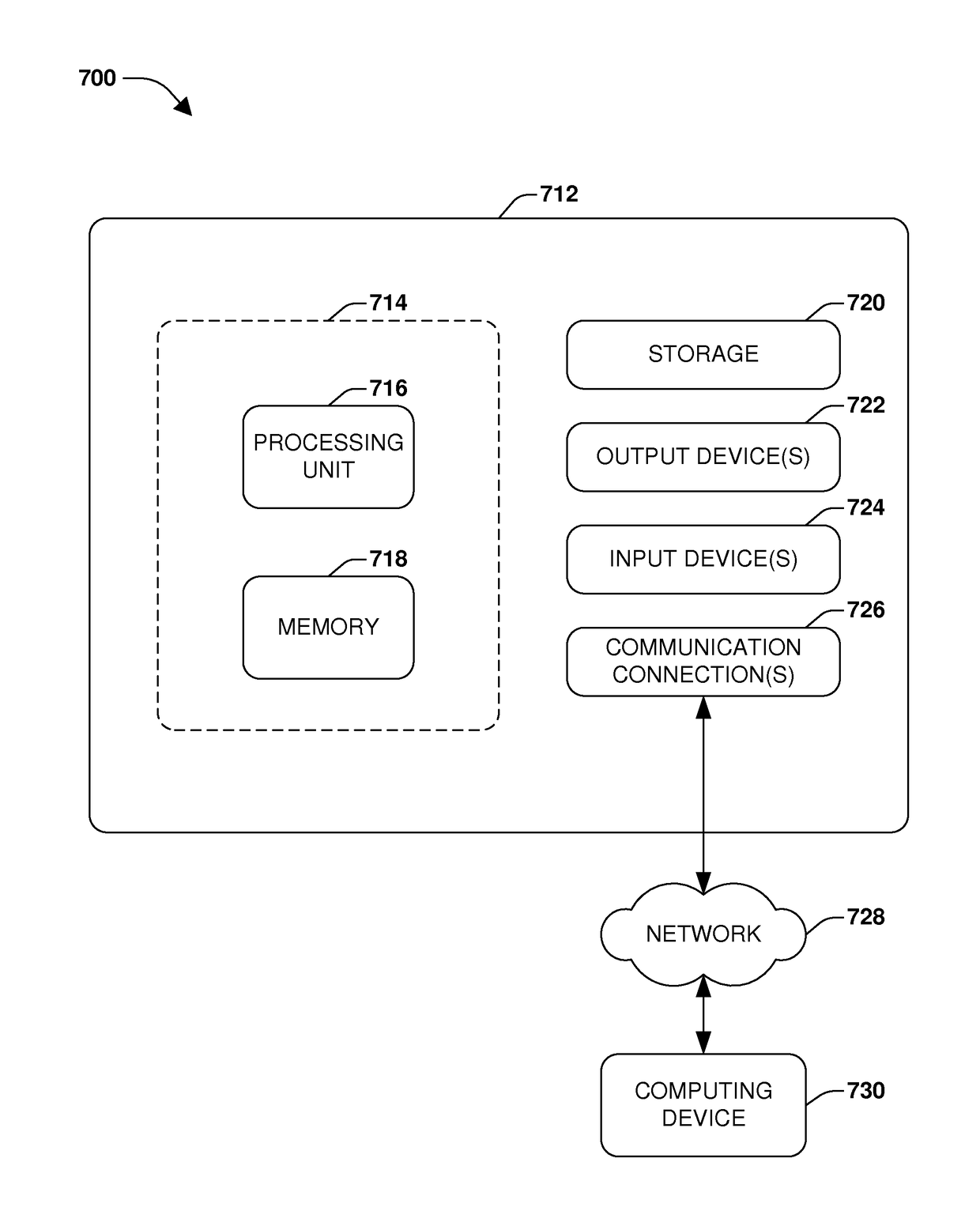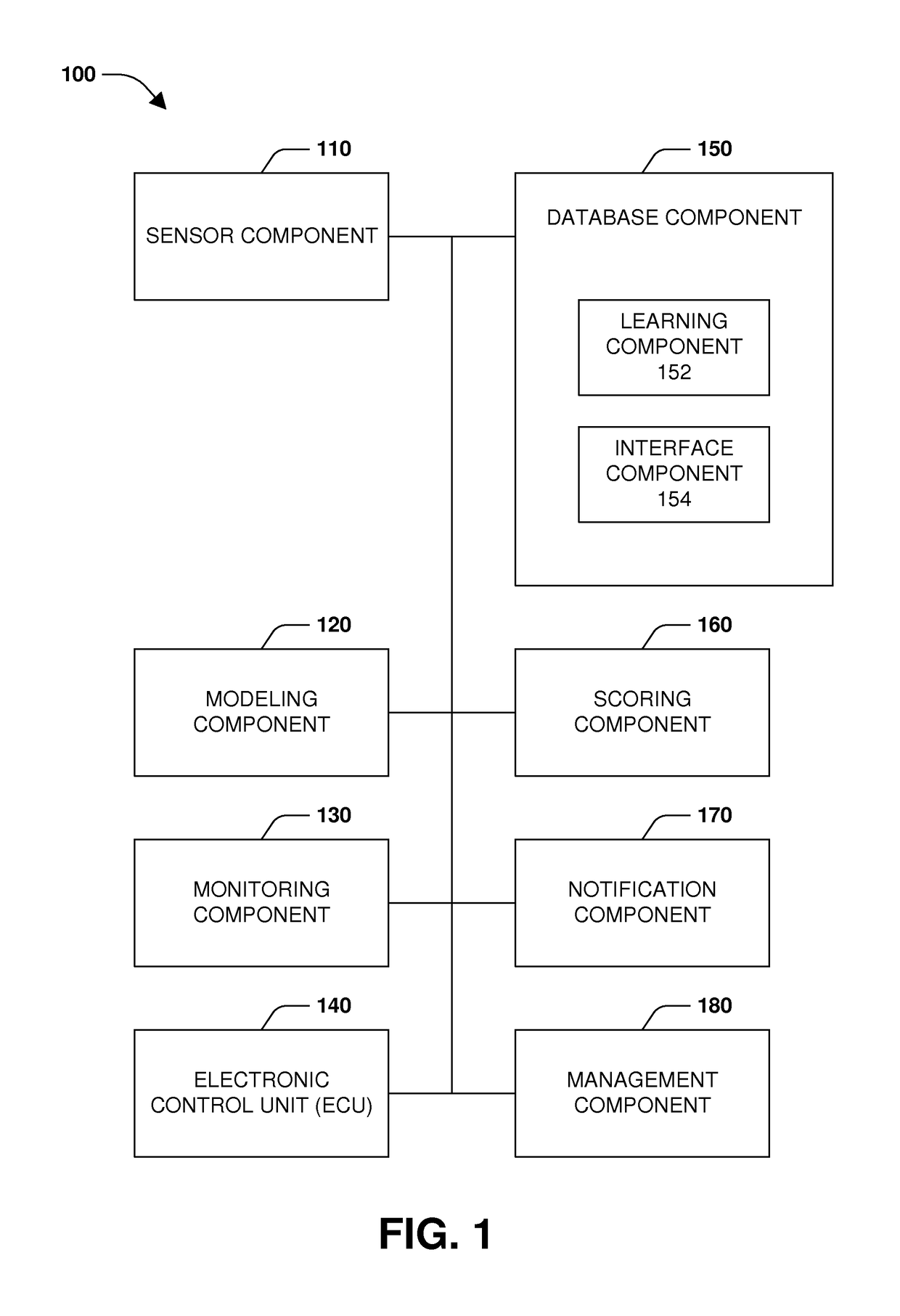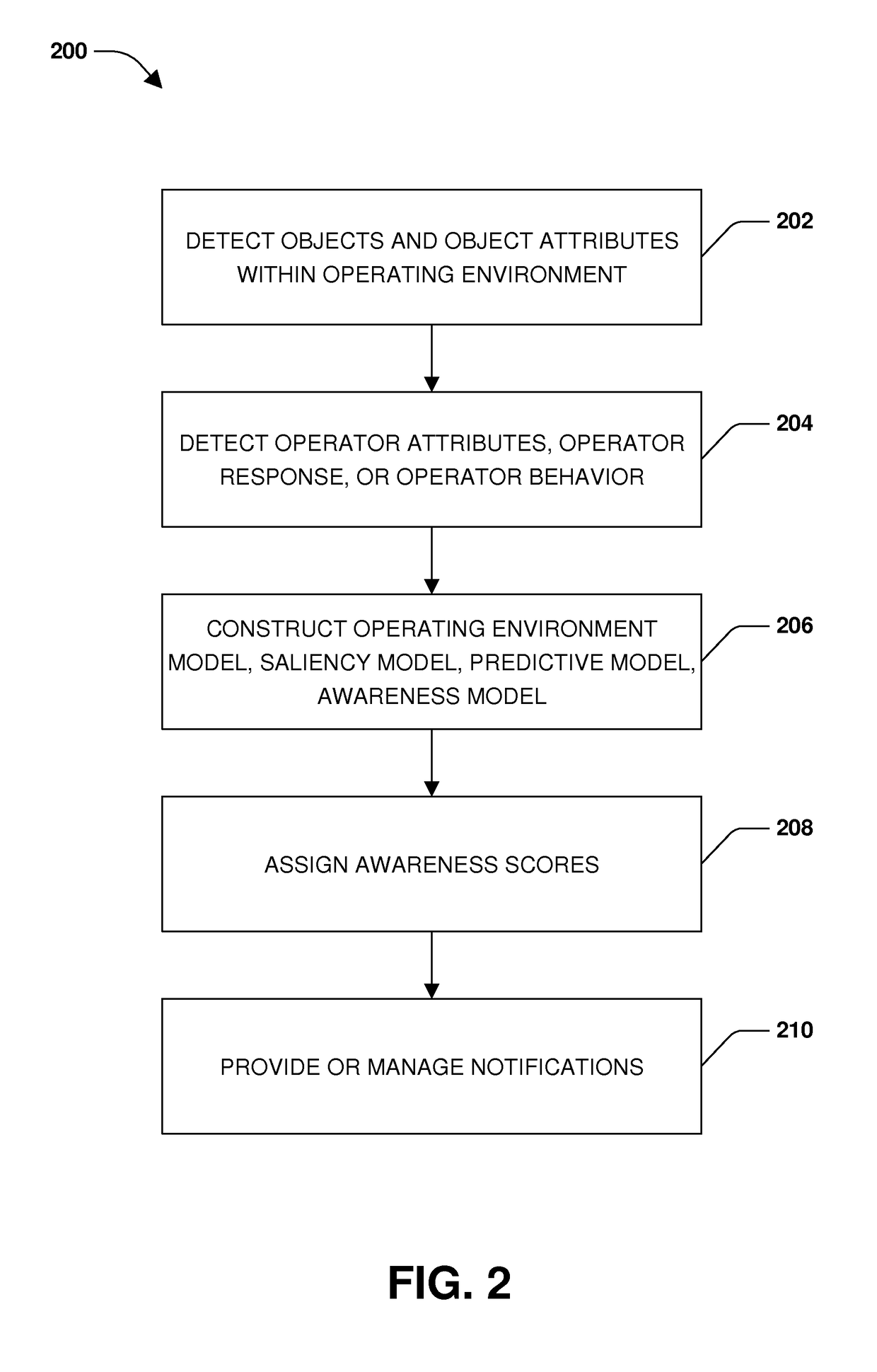Saliency based awareness modeling
a technology of awareness modeling and awareness, applied in the field of awareness modeling, to achieve the effect of reducing the amount of operator cognition consumed and reducing the generation of excess notifications
- Summary
- Abstract
- Description
- Claims
- Application Information
AI Technical Summary
Benefits of technology
Problems solved by technology
Method used
Image
Examples
Embodiment Construction
[0020]Embodiments or examples, illustrated in the drawings are disclosed below using specific language. It will nevertheless be understood that the embodiments or examples are not intended to be limiting. Any alterations and modifications in the disclosed embodiments, and any further applications of the principles disclosed in this document are contemplated as would normally occur to one of ordinary skill in the pertinent art.
[0021]For one or more of the figures herein, one or more boundaries, such as boundary 714 of FIG. 7, for example, may be drawn with different heights, widths, perimeters, aspect ratios, shapes, etc. relative to one another merely for illustrative purposes, and are not necessarily drawn to scale. For example, because dashed or dotted lines may be used to represent different boundaries, if the dashed and dotted lines were drawn on top of one another they would not be distinguishable in the figures, and thus may be drawn with different dimensions or slightly apart...
PUM
 Login to View More
Login to View More Abstract
Description
Claims
Application Information
 Login to View More
Login to View More - R&D
- Intellectual Property
- Life Sciences
- Materials
- Tech Scout
- Unparalleled Data Quality
- Higher Quality Content
- 60% Fewer Hallucinations
Browse by: Latest US Patents, China's latest patents, Technical Efficacy Thesaurus, Application Domain, Technology Topic, Popular Technical Reports.
© 2025 PatSnap. All rights reserved.Legal|Privacy policy|Modern Slavery Act Transparency Statement|Sitemap|About US| Contact US: help@patsnap.com



